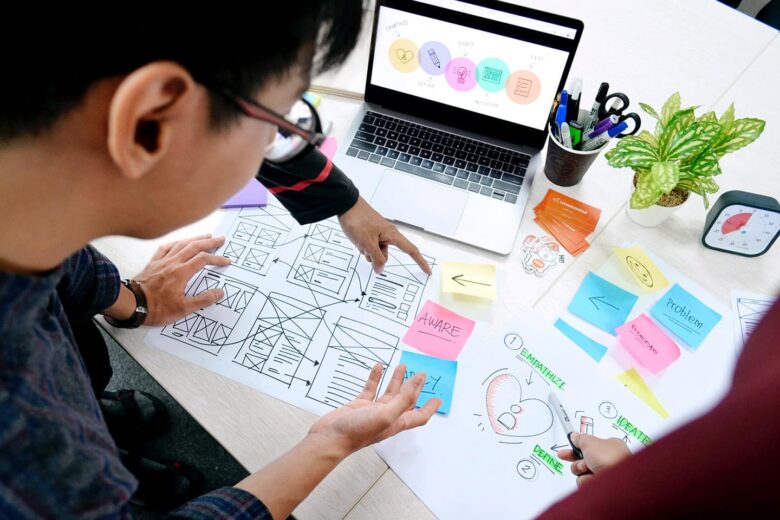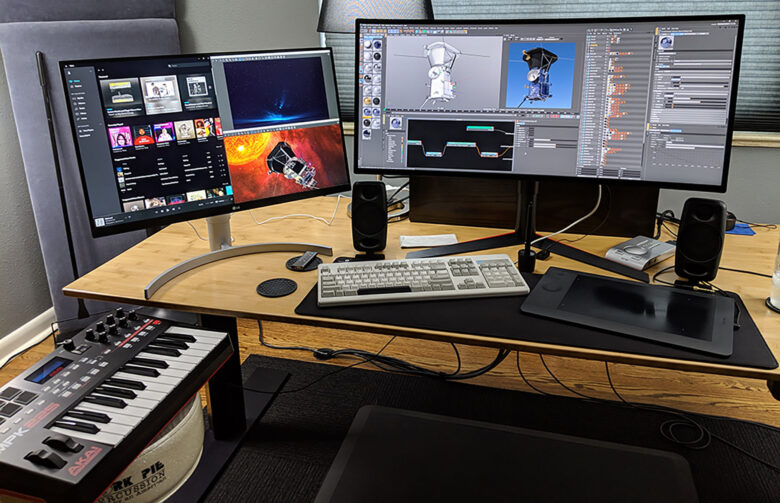Web design is a complex process that involves many different steps and stakeholders. From the initial research and planning stage to the final launch and post-launch optimization, web design requires a high level of collaboration and communication between the client and the web design agency. In this blog post, we’ll take a closer look at the importance of collaboration in the web design agency process and how it can impact the final product.
Understanding the Client’s Needs and Goals

Source: namasteui.com
The first step in the web design agency process is to understand the client’s needs and goals as explained by the experts from brandvm.com. This involves a thorough discovery process, where the team asks questions about the client’s business, industry, target audience, brand values, and marketing objectives. The agency may also conduct research and analysis to identify market trends, competitor strategies, and user behavior.
This stage is crucial for establishing a clear and comprehensive brief that outlines the scope, timelines, and deliverables of the project. It’s also an opportunity for the client and the agency to establish a relationship based on trust and mutual understanding. By collaborating closely with the client during the discovery stage, the agency can create a web design that aligns with the client’s vision and expectations.
Developing a Concept and Design

Source: creativerepute.com
Once the discovery stage is complete, the agency moves on to the concept and design stage. This is where the team translates the client’s brief into a visual concept that reflects their brand personality, values, and goals. The agency may create wireframes, mockups, or prototypes to test different design elements and user experiences. The client is involved in the design process through regular feedback and revisions, ensuring that the design meets their expectations and requirements.
This stage is where collaboration is essential, as the company team and the client work together to refine and iterate the design until it’s ready for development. The agency may also involve other stakeholders, such as UX/UI designers, copywriters, and developers, to ensure that the whole package is both visually appealing and functional. By collaborating closely during the initial stage, the agency can create a design that not only looks great but also meets the client’s business needs and user expectations.
Developing and Launching the Website
The next stage in the process is development and launch. This is where the design is turned into a functional website that meets web standards and accessibility guidelines. The agency may use different development technologies and frameworks, such as HTML, CSS, JavaScript, and CMS platforms, to create a website that is optimized for speed, performance, and security.
This stage requires a high level of collaboration between the agency’s development team and the client’s IT or marketing team. The agency must ensure that the website meets the client’s technical requirements and integrates with their existing systems and tools. The agency may also provide training and support to the client’s team on how to use and update the website after launch.
Post-Launch Optimization and Maintenance

Source: greyscalegorilla.com
The final stage in the process is post-launch optimization and maintenance. This is where the team monitors and analyzes the website’s performance and user behavior, and makes adjustments and improvements to enhance the user experience and drive conversions. The agency may use different analytics tools and techniques, such as A/B testing, heat mapping, and user feedback, to optimize the website’s design and content.
This stage also requires collaboration between the agency and the client, as the team must communicate the website’s performance and recommend changes and updates to the client’s team. The agency may also provide ongoing support and maintenance services, such as security updates, content updates, and bug fixes, to ensure that the website remains up-to-date and functional.
Why Collaboration Matters in Web Design Agency Process

Source: youworkforthem.com
Collaboration is essential in the web design agency process for several reasons. First, collaboration ensures that the client’s needs and goals are understood and met throughout the project. By involving the client in the process and seeking their feedback and approval at every stage, the agency can create a web design that aligns with the client’s vision and expectations. This can help to avoid misunderstandings, delays, and revisions later in the project.
Second, collaboration allows for greater creativity and innovation in web design. By involving different stakeholders, such as designers, developers, copywriters, and marketers, the agency can leverage their diverse skills and expertise to create a web design that is both visually appealing and functional. This can lead to a more engaging and effective website that drives traffic, engagement, and conversions.
Third, collaboration fosters trust and partnership between the client and the agency. By involving the client in the process and communicating openly and transparently, the agency can establish a relationship based on mutual understanding and respect. This can lead to long-term collaborations and referrals, as well as a higher level of satisfaction and loyalty from the client.
Web design is a complex and collaborative process that requires close communication and cooperation between the client and the company. By involving the client in the discovery, concept, design, development, and post-launch stages, the team can create complete package that meets the client’s needs and goals while also delivering an engaging and effective user experience. Collaboration is essential for establishing trust, fostering creativity, and ensuring success in the web design agency process.
Conclusion
In conclusion, web design is a complex process that involves several stages and stakeholders. Collaboration is vital in each of these stages to ensure that the client’s needs and goals are understood, met, and exceeded. Collaborating closely with the client during the discovery stage can help the agency establish a relationship based on trust and mutual understanding. During the concept and design stage, collaboration can help to refine and iterate the design until it meets the client’s requirements.
Collaboration is also essential during the development and launch stage to ensure that the website meets the client’s technical requirements and integrates with their existing systems and tools. Finally, post-launch optimization and maintenance require ongoing collaboration to monitor and analyze the website’s performance and user behavior and make adjustments and improvements. Overall, collaboration is essential in the web design agency process to establish trust, foster creativity, and ensure success.




